‘We Were the Lucky Ones’: Thomas Kail on the Emotional Finale Episode
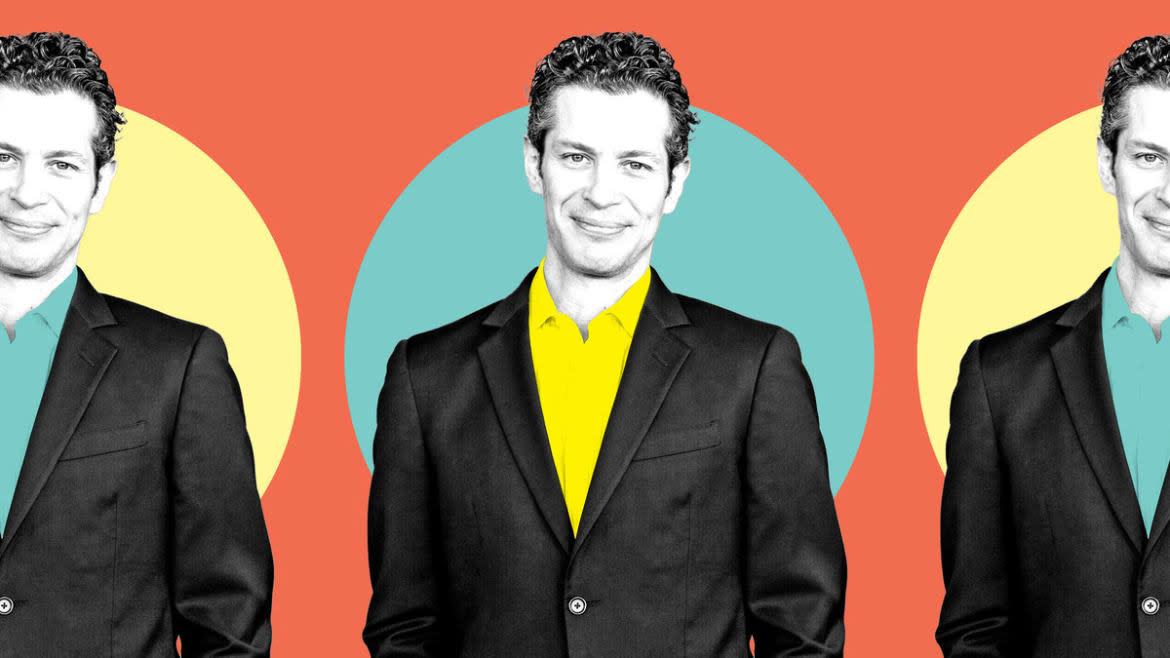
- Oops!Something went wrong.Please try again later.
- Oops!Something went wrong.Please try again later.
Growing up, Thomas Kail—the Tony- and Emmy-winning director—loved It’s A Wonderful Life. “We were this Jewish family living in Northern Virginia and my mother loved Jimmy Stewart. That movie was always on,” Kail told The Daily Beast’s Obsessed over Zoom. Though he was unaware that directing was even a job at the time, Kail’s discovery of who made the film—Frank Capra—sent him on a journey to discover what else Capra made, and who inspired him to make films. “It was definitely a gateway,” said Kail.
Since finding his passion for theater in his early twenties, Kail has become a prominent stage director, helming musicals like In the Heights, Sweeney Todd, and Hamilton (for which he won a Tony). He’s also directed countless plays, and has broken into television, directing episodes of 2 Broke Girls, Up Here, and the special Grease Live. He also created Fosse/Verdon, which stars his wife Michelle Williams.
His latest project—the Hulu limited series We Were the Lucky Ones, tells the incredible true story of the Kurcs, a Jewish family who defied the odds by surviving the events of the Holocaust. Kail served as executive producer, and directed the series premiere and finale, which is now available to stream. The series has received critical acclaim, and even screened at the United Holocaust Memorial Museum in Washington, D.C. “It was a night that will be held in our hearts and never forgotten,” Kail said.
With the full series now out, Kail spoke to us about his approach to directing, the decades-long process of bringing We Were the Lucky Ones to the screen, and the most challenging scenes to film of the heartbreaking and heartwarming finale.
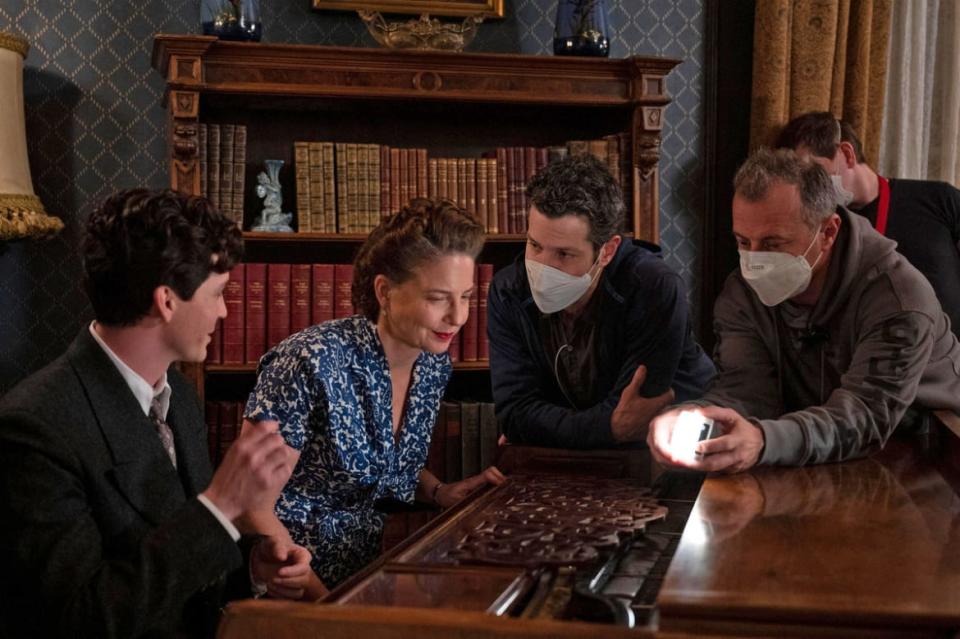
Logan Lerman, Robin Weigert, and Thomas Kail
Growing up, Kail loved soccer. He played throughout high school but realized around age 12 that he didn’t have what it took to be a professional athlete. However, he found a connection between sports and theater that set him on a path that would lead to his eventual career. “When I played sports, I was unaware of the passage of time. There are a lot of themes that recur in the stuff that I make, and running out of time is a big one for me. I found that when I would make theater with my friends, time would disappear,” Kail said.
When speaking of creating, specifically directing, Kail hones in on the importance of the community over the individual. “I spent a lot of my life trying to dismantle this idea of the lone genius—which was what Fosse/Verdon is about—and also this idea that acrimony creates greatness. That has not been my experience. Every time we have harmony within a production and make something of high quality, we're knocking down that mythology,” Kail explained.
That harmony was essential for navigating the darkness required for a story like We Were the Lucky Ones. “We were shooting in Bucharest, quite far away from home for all of us. I wanted to get in early and rehearse during the day and have dinners at night. If we could have the work and then have the time to relax and release, that would ultimately show in the work,” Kail said. Those dinners proved not only essential to building chemistry among the cast and crew, but the idea of coming together at dinnertime is vital to the show itself. “This is a story about a family trying to get back around the dinner table. And it takes them eight years. But I thought, ‘Why don’t we build it in the rehearsal room and around the dinner table and you can try to capture something when you're shooting,’ Kail said. “They can harness that energy and that affection that this group clearly had for each other.”
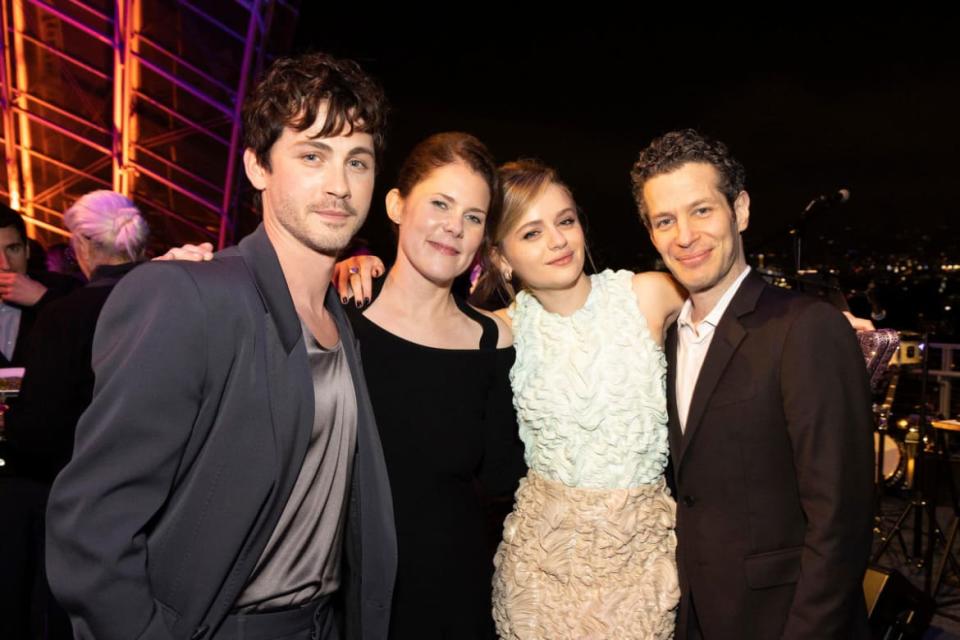
Logan Lerman, Erica Lipez, Joey King, and Thomas Kail
Kail’s connection to We Were The Lucky Ones actually began decades before the book was even written. In 1999, Kail met Georgia Hunter—the author of We Were the Lucky Ones—as she was marrying one of his childhood best friends. “And she was telling me about this story then,” Kail recalled. “We stayed in touch over the years. She researched for nine years before building up to writing it. I remember being so moved that my friend wrote down the story of her family.”
Kail also had a connection to Georgia’s family—particularly her father, Thomas Hunter, who starred in various spaghetti westerns and wrote the 1980 film The Final Countdown. “I would sit with Georgia’s dad. He was one of the first professionals in the industry that I knew. He had done everything that I was interested in doing. He was so generous,” he said. Several months after he passed, Kail couldn’t stop thinking about how much Hunter had meant to him and how encouraging he was. So Kail called Georgia in 2018, and they became partners in turning the book into a series.
‘We Were the Lucky Ones’: Joey King Shines in Hulu’s Devastating WWII Drama
“The circumstances of this story is an atrocity, and the question of how a family tries to move through this moment in time, and how it changes the definition of their roles within the family,” Kail said. One profound question stood out to him: “This idea of, who are you if the thing that you've always told yourself you are is taken from you?”
Everything Kail does when creating is driven by people: “What I love doing is putting people together who don't know each other. I love working with people that ‘ve already worked with, while also bringing in new energy and figuring out how to navigate that.” This proved to be the recipe for success in We Were the Lucky Ones, as Kail connected author Georgia to showrunner and writer Erica Lipez. “Erica and I met in the theaters. She wrote a play I directed in 2013. I wanted to work with her more. I read We Were the Lucky Ones and I had an instinct that said ‘This is Erica.’ I sent her the book, and 24 hours later, she called me and said yes.”
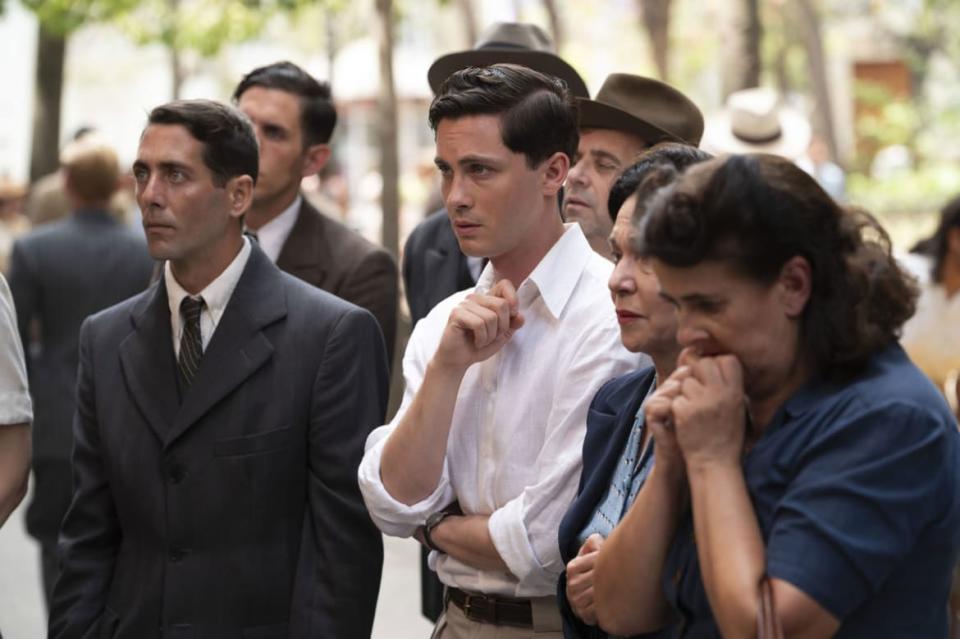
Logan Lerman
A striking element of We Were the Lucky Ones is that the cast is predominantly Jewish. Kail thought creating a convincing Kurc family was paramount to the success of the show. “What was important to us was to find a family,” Kail noted. “We wanted to find a group of people that most likely had not met, but could come together in an instant, and we could invest in this family and go off with them.”
A big part of the chemistry came from the fact that the cast was united in their Jewish experience. “The way that we all relate to our culture, to our past, and to our Jewishness is incredibly distinct,” Kail explained. “As we were putting this group together, we had Jews who grew up in America, in the U.K., in Israel. Their relationship to what it meant to be Jewish was incredibly specific. And yet there was also something they seemed to foundationally understand upon meeting, and that felt like it was really useful for us to build from.”
It was that foundation and understanding that proved essential to making the Kurc family believable. In the series finale, against all odds, the Kurc family is reunited once again. But there were still challenges for the family before this happens, one of the most brutal being Halina’s (Joey King) experience in prison, where she is tortured in order to extract a confession of her Judaism.
“At that point of filming, [Joey and I] were so deep into our friendship in the process of making this that there was such trust and faith,” Kail recalled. “The first thing always is what made her feel safe. What made her body feel safe, what made her spirit feel safe, knowing that we're going to be representing physical pain. This place is where people were tortured and Joey had to bring that to bear in the scenes. We made sure to talk about everything we might be thinking about before we stepped into it. And I checked in with her every 30 seconds. When she felt ready to go, we were ready for her.”
How That Epic (and Sexy) ‘Challengers’ Final Tennis Match Was Made
King’s Halina is the emotional lynchpin of the show, and the prison sequences functioned as a physical manifestation of everything she had gone through in the nine-year journey to be reunited with the rest of her family. Kail was blown away by King’s performance and work ethic. “They don't make them like Joey. I feel like getting to know her through the course of this—I knew her a little bit before—just the way that she approached the work and was a leader of this company prepared her to be able to go and do the work that she needed to do in the finale. She was an ideal partner every step of the way,” Kail commented.
Discussing his direction of the finale, Kail again highlighted the importance of his collaborators. “My partnership with Erica Lipez was made in heaven. It was a constant conversation that had been going on for years and years, and she wrote the finale episode and gave us everything we needed.
After the horrors the Kurc family endured before, during, and after the war, it was nothing short of a miracle that they would all be reunited for the Passover seder that eluded them for nearly a decade. And creating the series' final moments was no small task. It was important for Kail to bookend the series with a Passover seder: “The story, at its simplest, is about a family that’s trying to get back to the dinner table. That dinner is Passover in 1938, and it’s interrupted. The next time they sit down together it’s 1947… Passover gave us these anchors.”
In directing the finale, Kail saw himself as something of a builder: “My job was to take that blueprint [of Erica’s script] and build the building,” Kail explained. “We knew what the family had been through, and we knew they were going to find each other again. We wanted to take our time with each of those moments. And we felt that those moments had been earned. As the episode shows us, with every moment of existence, there's the remembrance of those who aren’t there.”
The incalculable joy the Kurc family experiences, being reunited again after so long, was somewhat reflective of the community Kail and others shepherded in making We Were the Lucky Ones. But before the happiness could take over, it was vital to reflect on what had been lost for not only the Kurc family, but all those who perished in the Holocaust. That was captured through the heartbreaking recitation of the Mourner’s Kaddish, a prayer that commemorates those who have passed. Each member of the family stands up to recall the names of those closest to them who died.
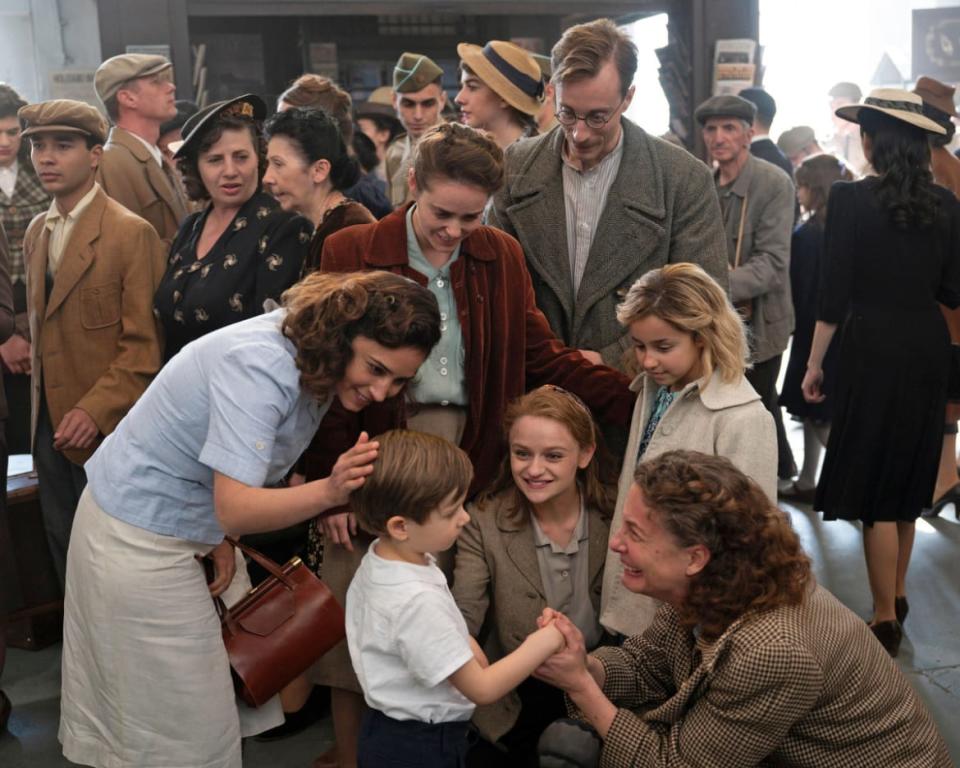
The cast of We Were the Lucky Ones
“We were all back together in the same room. To be together after over 100 days of filming—we filmed 100 days in Bucharest and then 22 days in Spain—and this scene was filmed around the middle of our time in Spain,” Kail said. “To have [the Kaddish] in the middle of this dinner was special. To acknowledge who wasn’t there felt so true to what that experience would have been. And we wanted to make sure to capture that.”
In filming the extremely emotional finale, Kail was fascinated—and amused—by how varied every person’s own Passover experiences were. “The amount of conversation about what Passover should be was incredible,” Kail remembered. “The nature of Passover is that everyone does it a little differently. It felt like a metaphor for how we move through the world—how we relate to our family, our culture, our religion. It felt so good to be back together around the table. If we could get that feeling on camera, of how happy everybody was, just to be back together after this particular ride of making this show.”
“I’ll put it this way,” Kail said. “The transcript of what happened between ‘cut’ and ‘action’ of what Passover should be was a limited series of its own.”
Get the Daily Beast's biggest scoops and scandals delivered right to your inbox. Sign up now.
Stay informed and gain unlimited access to the Daily Beast's unmatched reporting. Subscribe now.

